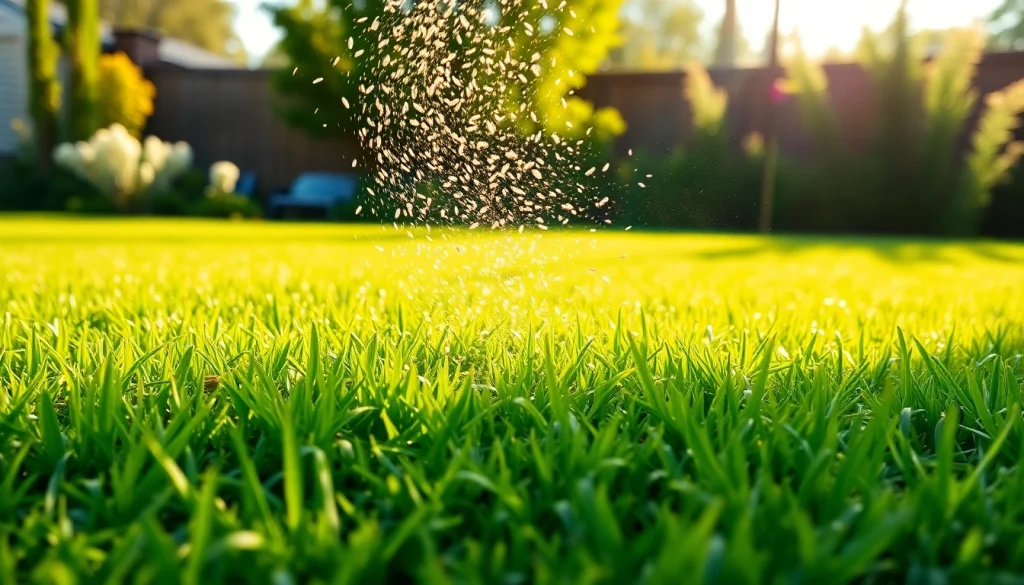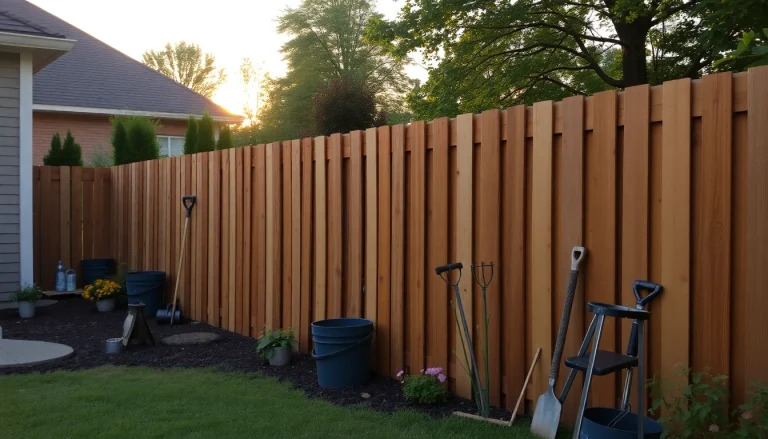
Understanding Over Seeding: What You Need to Know
Over seeding is a critical lawn care technique that involves introducing new grass seeds into an existing lawn to enhance its overall health and appearance. By understanding the nuances of this practice, homeowners and lawn enthusiasts can revitalize patchy areas, improve turf density, and prevent weed infestations effectively. In this comprehensive guide, we’ll delve into the definition and benefits of over seeding, discuss when it is most advantageous to consider, and address common misconceptions surrounding this important lawn care strategy. For more resources on over seeding, stay tuned.
Definition and Benefits of Over Seeding
Over seeding refers to the process of spreading grass seed over an existing lawn without the need to till or disturb the soil. This method allows for the introduction of new grass strains, which can help fill in bare patches due to wear, disease, or environmental stressors. The primary benefits of over seeding include:
- Thicker lawn: By increasing the number of grass plants, over seeding results in a denser turf that can withstand foot traffic better and resist weeds.
- Improved color: Introducing new varieties can enhance the visual appeal of your lawn, providing a lush and vibrant green appearance.
- Enhanced resistance: Some new grass seeds are bred for specific environmental conditions, making them more resilient to pests, diseases, and drought.
- Filling bare spots: Over seeding is an effective way to restore areas of your lawn that may have thinned out over time.
When to Consider Over Seeding
The timing of over seeding is crucial for its success. Typically, the best times to overseed are:
- Late summer to early fall: During this period, soil temperatures remain warm enough for seed germination while cooler air temperatures allow for better moisture retention. The combination of these factors creates optimal conditions for young grass to establish.
- Spring: Although spring can be suitable, it is often accompanied by increased competition from weeds and less predictable weather, which can affect seed success.
As a rule of thumb, avoid over seeding during the heat of summer or in early winter when the seeds are unlikely to germinate and establish successfully.
Common Misconceptions About Over Seeding
There are several misconceptions about over seeding that may deter homeowners from trying this effective lawn care approach. Here are a few cleared up:
- It’s not worth the effort: Many believe that seeding won’t lead to noticeable improvement, but with proper technique and timing, the results can be dramatic.
- Over seeding damages the existing lawn: When done correctly, overseeding improves the health and resilience of the existing lawn rather than harming it.
- I can just throw down seed anywhere: While it may seem simple, effective results come from proper techniques to ensure seed-to-soil contact and appropriate care post-seeding.
Preparing Your Lawn for Over Seeding
Before you begin the over seeding process, adequate preparation is essential. By assessing the condition of your lawn and making the necessary adjustments, you can set the stage for successful growth and vibrant results.
Assessing Your Lawn’s Condition
Conduct a thorough inspection of your lawn to identify problem areas. Look for signs of thinning grass, bare patches, or rough patches caused by pests or disease. Noting these areas will help you determine how much seed you’ll need and what type may be most suitable for your lawn’s conditions.
Optimal Mowing and Raking Techniques
Prior to overseeding, mow your lawn shorter than your typical length—aim for about 1 ½ to 2 inches. This height allows seedlings to receive better access to sunlight and minimizes competition. After mowing, it’s important to rake your lawn thoroughly to remove clippings and debris. This action also lightly aerates the soil, giving the new seeds better opportunities for contact with the soil surface, a critical factor for successful germination.
Choosing the Right Grass Seed for Over Seeding
Selecting the appropriate grass seed is crucial for successful overseeding. Consider factors such as:
- Climate: Choose seed varieties that are well-suited to your climate—warm-season grasses thrive in the south during summer heat, while cool-season grasses are best for northern areas.
- Sun and shade tolerance: If your lawn has areas of shade, ensure that you select a seed blend that can thrive in low-light conditions.
- Grass type compatibility: When over seeding, it’s advisable to choose a seed that is compatible with your existing grass type to ensure uniform growth and reduce competition.
The Over Seeding Process: Step-by-Step Instructions
Once you have prepared your lawn and chosen the right seed, it’s time to execute the over seeding process effectively. Below is a detailed guide to ensure you achieve optimal results.
Gathering Essential Tools and Supplies
Essential tools and supplies include:
- Grass seed (suitable for your lawn type)
- Spreader (broadcast or drop-type)
- Rake
- Fertilizer (preferably a starter fertilizer)
- Watering equipment (oscillating sprinkler or soaker hose)
Having these tools on hand will expedite the seed application process and enhance your post-seeding care regimen.
Techniques for Effective Seed Distribution
Evenly distributing the grass seed is key to success. Using a spreader is highly recommended as it allows for uniform distribution, ensuring that every part of your lawn receives an adequate amount of seed. Apply the seed at the recommended rate based on the seed package instructions, typically between 3 to 5 pounds of seed per 1,000 square feet.
Post-Seeding Maintenance Tips
After overseeding, the right maintenance techniques will ensure the seeds successfully germinate and establish. Consider the following tips for successful post-seeding care:
- Watering: Keep the soil consistently moist but not waterlogged. It’s best to water lightly and frequently (about two to three times per week) until the new grass is well established.
- Fertilizing: Apply a starter fertilizer to help boost seed germination and growth. Timing is important: apply within a few days of seeding to ensure the grass has the nutrients it needs.
- Avoid foot traffic: Try to keep foot traffic to a minimum on newly overseeded areas to protect new seedlings.
Common Challenges in Over Seeding and How to Overcome Them
Despite the benefits of overseeding, some challenges may arise during the process. Understanding how to address these challenges is vital for a successful outcome.
Dealing with Weeds and Pests
Weed competition is a common challenge in newly overseeded lawns. As new grass takes time to establish, it is vulnerable to fast-growing weeds. To mitigate this, consider applying pre-emergent herbicides at the appropriate time, but be cautious not to apply them too early, as they can hinder the germination of your new seed.
Managing Watering and Irrigation Needs
Watering can be tricky, especially considering that too little can lead to poor seed germination while too much can drown out seedlings. Implement a watering schedule that provides enough moisture without overwhelming the new grass. Monitoring the weather can help adjust your schedule accordingly.
Identifying and Correcting Growth Issues
If your new grass is struggling to grow, assess the environment for possible issues. Poor soil quality, inadequate sunlight, or pest infestation can hamper growth. Conduct soil testing to determine pH levels and nutrient presence. If necessary, consider integrating soil amendments or modifying your care practices to encourage better growth conditions.
Long-Term Benefits and Maintenance of an Overseeded Lawn
Successful over seeding results in a healthy lawn that is more resilient and visually appealing. Maintaining your lawn post-overseeding is key to maximizing these benefits.
Understanding the Growth Cycle
Newly overseeded grass will go through a growth cycle that is characterized by rapid germination and establishment. Understanding this cycle can help in tailor care practices that align with the needs of your grass. Factors such as temperature, moisture, and soil health will influence growth rates, so keep these in consideration.
Seasonal Care Best Practices
Managing your lawn in different seasons post-over seeding is crucial. In spring, continue monitoring moisture and apply fertilizers as needed. During summer, be diligent about watering, especially during heat waves. In fall, prepare your lawn for dormancy while considering another round of over seeding if desirable.
Evaluating Lawn Health After Over Seeding
Conducting a visual assessment of your lawn regularly will help determine the success of your over seeding efforts. Look for patches of healthy grass, vibrant color, and overall uniformity. If areas appear weak or sparse, reassess your care methods and consider making necessary adjustments for future seasons.
In conclusion, over seeding is a valuable technique for enhancing the quality of your lawn. With careful preparation, proper execution, and diligent maintenance, you can achieve a thick, beautiful, and healthy lawn that stands out in your neighborhood. The rewards of a successful over seeding process are not only immediate but can also sustain the beauty and resilience of your lawn for years to come.






